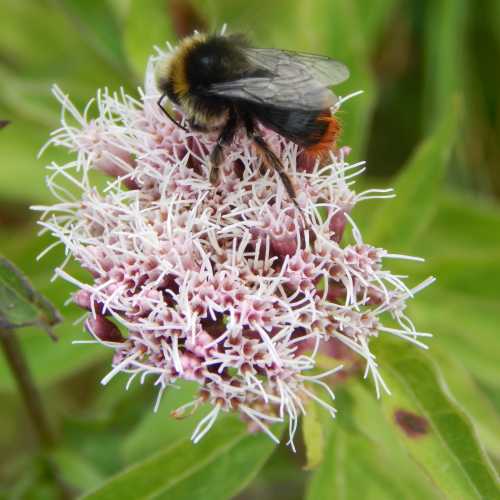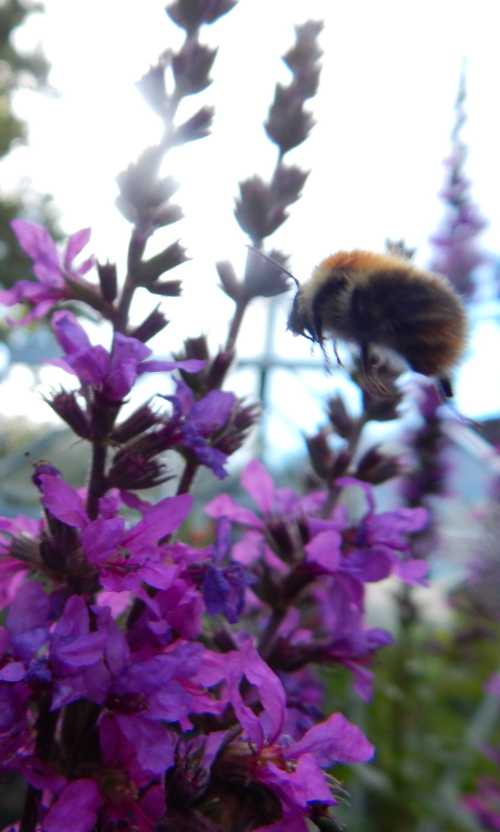Bombus Hypnorum:
The Tree Bumblebee
Bombus hypnorum (the Tree Bumble bee) is a relatively new arrival in Britain from continental Europe where it is widespread. Sightings were first reported in 2001 in Hampshire and Wiltshire in the south of England.
However, it is increasingly being recorded in other areas of the UK, from London, as far as Northumberland and throughout Wales.
Queens emerge from hibernation around February to March. By June, colonies will probably have produced males, and a second colony may even be produced.
Bombus hypnorum may be found in a variety of habitats, which range from gardens and allotments, to parks, woodlands, meadows and roadside verges if they are sufficiently abundant in flora.
Tree bumble bees tend to nest in holes, usually elevated from the ground – not surprising given the common name for this species! They hence prefer cavities in trees, but will also nest in a compost heap or occupy an empty bird nest box. They may also occupy cavities in buildings and roofs.
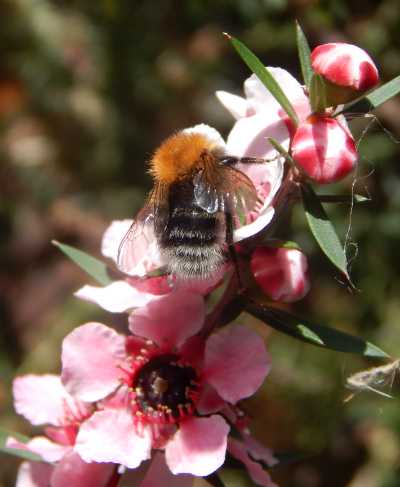 Tree bumble bee foraging on Manuka shrub.
Tree bumble bee foraging on Manuka shrub.Bombus hypnorum nest in compost heap
Below is a short piece of footage showing a tree bumble bee nest in our compost heap. The bumble bees flying around the entrance are males carrying out nest surveillance - it is sometimes referred to as a 'drone cloud' (in my experience, the public sometimes call it a 'swarm').
The males are patrolling the nest entrance area, hoping to pounce on and mate with newly emerging queens as they leave the nest.
Males cannot
sting.
A visitor wrote in to tell me about nests in her compost bin:
"This is the 2nd year the compost bin has been used by Tree Bumble bees. We keep this part of the garden fairly natural, as apart from the bees, we have good bird life, newts, slow worms and stag beetles.
This nest is fairly large with plenty of activity. Usually the bees have gone by the end of August. Our other nests are in the roof - and not so large. The bees are not at all aggressive, and I can open the top of the bin & observe them moving around."
Tree bumble bees in bird houses
Tree bumblebees are not the only bumblebees that will occupy a bird box - Bombus lapidarius for example, will also sometimes nest in a bird house.
Below is an image of a blue tit box which has become the site of a Bombus hypnorum nest. Several males are patrolling the entrance.
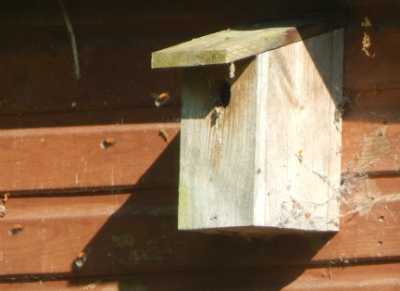
This video below shows the male bumble bees, again on nest surveillance, around the entrance of the bird house.
How to move a Bombus Hypnorum - Tree Bumble Bee Nest
Seeing all these bumble bees flying around the nest entrance like this is often the first point at which people notice the nest. However, whilst some people feel intimidated by this sight, as stated earlier, males cannot sting.
Nevertheless, if a bird box is attached to a house wall and close to a door, the vibrations can disturb the bees, which have been observed to 'fly at' the disturbance, causing some alarm.
Your options are to:
- ignore it and let them go about their business
- make a slight adjustment to activities
- move the nest
More information about the above approaches and bumble bee nests in bird house.
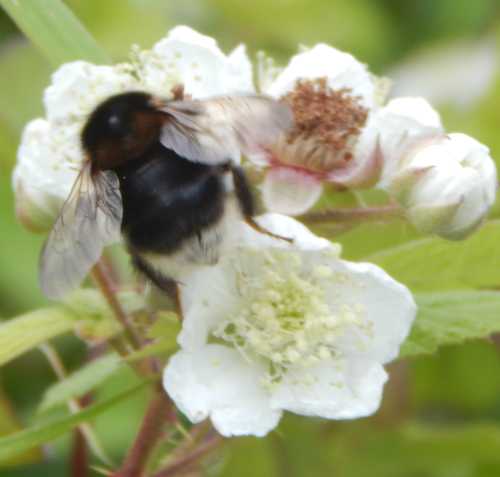 Bombus hypnorum queen - dark form. Foraging on bramble flowers
Bombus hypnorum queen - dark form. Foraging on bramble flowersWhich flowers provide food for Bombus hypnorum
I am not aware of any studies in this area, but from personal observation, it seems the Tree bumble bee appears to forage on a wide range of flowers in gardens and parks, as well as herbs and wildflowers.
Sedum, bramble, manuka, geranium, rosa rugosa, fruit trees, teasels, crocus, dandelion, knapweed, purple loosestrife, and many, many others may be visited by this species.
Visit my lists of plants for bees.
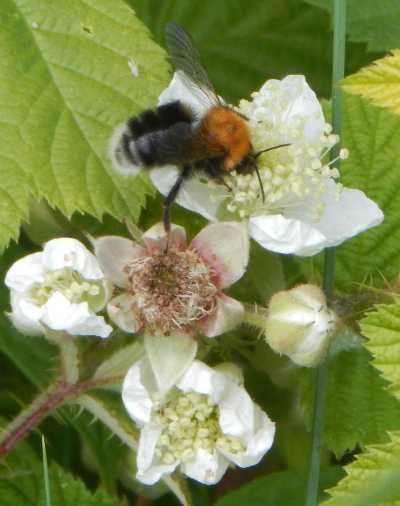 Bombus hypnorum on bramble
Bombus hypnorum on brambleResources
Habitat and Forage Associations of a Naturally Colonising Insect Pollinator, the Tree Bumblebee Bombus hypnorum
Crowther LP, Hein PL, Bourke AFG (2014) Habitat and Forage Associations of a Naturally Colonising Insect Pollinator, the Tree Bumblebee Bombus hypnorum. PLOS ONE 9(9): e107568. https://doi.org/10.1371/journal.pone.0107568
If you found this page helpful or interesting, I'd really be grateful if you would share it with others - if not this page, perhaps another, such as Gardening For Bees.
Thank you so much :) .
